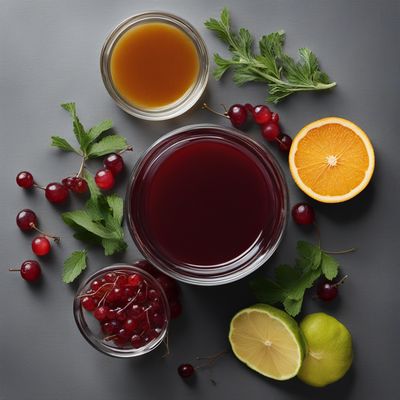
Ingredient
Juice, red currant
Tangy Elixir: Unleash the Vibrant Flavors of Red Currant
Red currant juice is a tangy and refreshing beverage that showcases the vibrant flavors of these small, tart berries. With its bright red color and invigorating taste, red currant juice is a delightful way to quench your thirst and awaken your senses.
Origins and history
Red currants have been cultivated for centuries and are native to Europe. They have a long history of culinary use, particularly in jams, jellies, and beverages. Red currant juice is made by extracting the juice from these berries and can be enjoyed on its own or used as an ingredient in cocktails, mocktails, and desserts. Its distinct tartness adds a unique twist to any recipe.
Nutritional information
Tart and tangy with a hint of sweetness.
Allergens
Red currant juice is a good source of vitamin C, antioxidants, and dietary fiber. It is low in calories and fat, making it a healthy and refreshing choice. The juice contains essential minerals like potassium and manganese, which contribute to overall well-being. Enjoy a glass of red currant juice to boost your immune system and promote hydration.
How to select
Red currants are not known to be associated with common allergens. However, individuals with sensitivities to berries or specific fruit allergies should exercise caution and consult with a healthcare professional if necessary.
Storage recommendations
Red currants can be grown in home gardens or small-scale farms. They thrive in cool climates and are relatively easy to cultivate. Plant red currant bushes in well-drained soil and provide them with adequate sunlight and water. Prune the bushes regularly to maintain their shape and promote healthy growth. Harvest the berries when they are fully ripe and use them to make your own homemade red currant juice.
How to produce
To select the best red currants for juicing, look for berries that are plump, firm, and brightly colored. Avoid berries that are soft, mushy, or discolored. Fresh red currants should have a vibrant red hue and a slightly tart aroma. If purchasing pre-packaged red currant juice, check the label for any added sugars or preservatives.
Preparation tips
To maintain the freshness and quality of red currant juice, store it in a sealed container in the refrigerator. Consume it within a few days to enjoy its optimal taste and nutritional benefits. If making homemade juice, consider freezing it in ice cube trays for longer storage. Thaw the juice cubes as needed for a refreshing treat or to add a burst of flavor to your favorite beverages.
Substitutions
Red currant juice can be enjoyed on its own as a refreshing beverage or used as an ingredient in various recipes. It adds a tangy and vibrant flavor to cocktails, mocktails, smoothies, and fruit punches. Red currant juice can also be used to make flavorful sauces, syrups, and glazes for savory dishes like roasted meats or grilled vegetables. Its tartness pairs well with sweet desserts, such as cakes, tarts, and sorbets.
Availability
Red currant juice is commonly used in European cuisine, particularly in countries like Sweden, Finland, and Germany. It is also popular in Scandinavian cuisine, where it is used in traditional dishes like rødgrød, a red berry pudding. Red currants are cultivated in various regions around the world, including Europe, North America, and Asia.
More ingredients from this category » Browse all
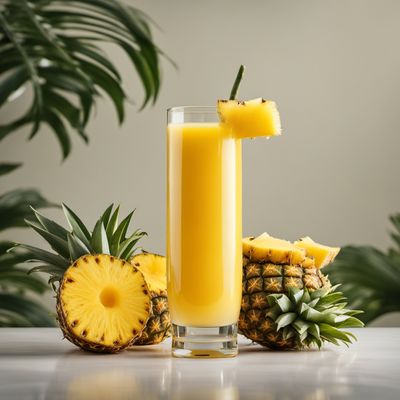
Juice, pineapple
Tropical Elixir
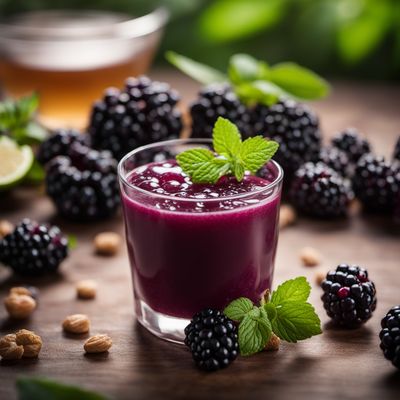
Juice, blackberry
The Dark Elixir

Juice, pear
The Refreshing Elixir of Pear

Juice, prune
The Sweet and Tangy Elixir of Prune Juice

Juice, lemon
The Zesty Elixir

Juice, cranberry
Tart Elixir: Unveiling the Vibrant World of Cranberry Juice
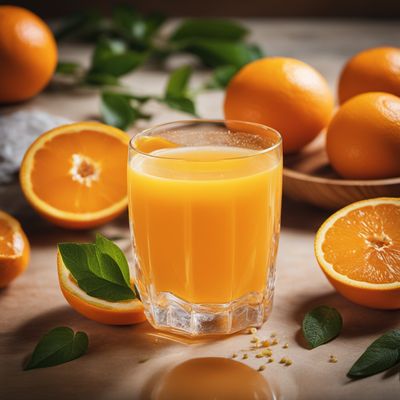
Juice, orange
"The Zesty Elixir: Unleashing the Vibrant Flavors of Freshly Squeezed Orange Juice"

Juice, nectarine
"The Golden Elixir: Unleashing the Vibrant Flavors of Nectarine Juice"

Juice, black currant
The Dark Elixir

Juice, lime
The Zesty Elixir
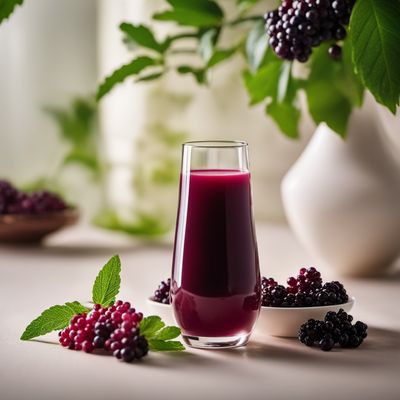
Juice, elderberry
The Immunity Booster

Juice, passion fruit
The Tropical Elixir
